A light wave along ray reflects once from a mirror, and a light wave along ray reflects twice from that same mirror and once from a tiny mirror at distance from the bigger mirror. (Neglect the slight tilt of the rays.) The waves have wavelength and are initially exactly out of phase. What are the smallest, second smallest and fourth smallest values of , that result in the final waves being exactly in phase?
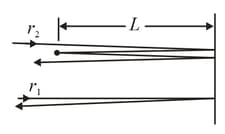

Important Questions on Interference
In the following figure, an airtight chamber of length is placed in one of the arms of a Michelson interferometer. (The glass window on each end of the chamber has negligible thickness.) Light of wavelength is used. Evacuating the air from the chamber causes a shift of bright fringes. From this data and to six significant figures, find the index of refraction of air at the atmospheric pressure.
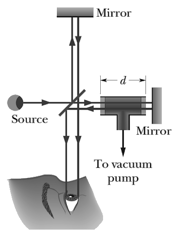
In the double-slit experiment, as shown in the following figure, the viewing screen is at distance . Point lies at distance from the centre of the pattern, the slit separation is , and the wavelength is .
(a) Determine where point is in the interference pattern by giving the maximum or minimum on which it lies, or the maximum and minimum between which it lies.
(b) What is the ratio of the intensity at point to the intensity at the centre of the pattern?
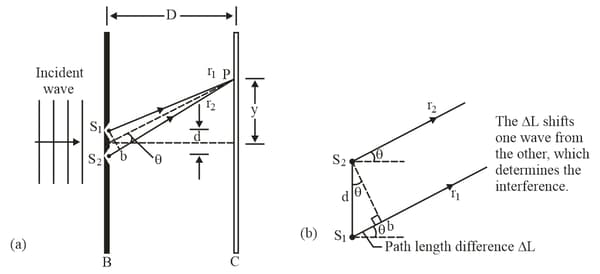
In the below figure, a broad beam of light of wavelength is incident at on a thin, wedge-shaped film with an index of refraction . The transmission gives bright and dark fringes along the film's length. What is the left-to-right change in the film thickness?
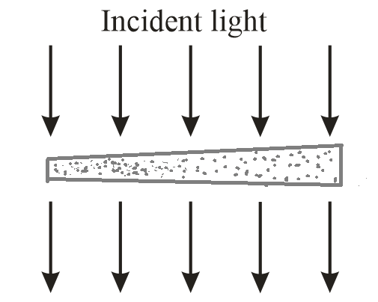
In the below figure, two light rays go through different paths by reflecting from the various flat surfaces shown. The light waves have a wavelength of and are initially in phase. What is the smallest and the second smallest value of distance that will put the waves exactly out of phase as they emerge from the region?

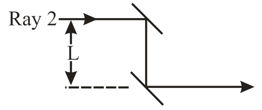
In the following figure, assume that the two light waves, of wavelength in the air, are initially out of phase by . The indexes of refraction of the media are and . What is the smallest and second smallest value of that will put the waves exactly in phase, once they pass through the two media?

In a double-slit experiment, the fourth-order maximum for a wavelength of occurs at an angle of .
(a) What range of wavelengths in the visible range to is not present in the third-order maxima?
(b) To eliminate all the visible light in the fourth-order maximum, should the slit separation be increased or decreased and (c) What least change is needed?
